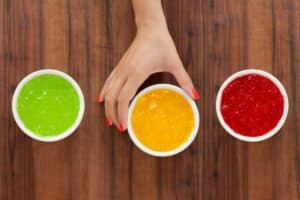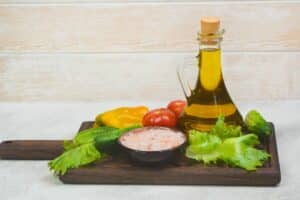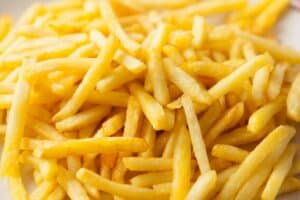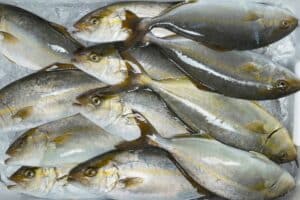Having a healthy and balanced diet is the easiest way to make sure that your family has the best health and fitness possible. The easiest way to provide a healthy and balanced diet for your family is to cook meals from scratch using fresh ingredients.
If you are new to cooking from scratch, you might have some questions about the ingredients that you are using.
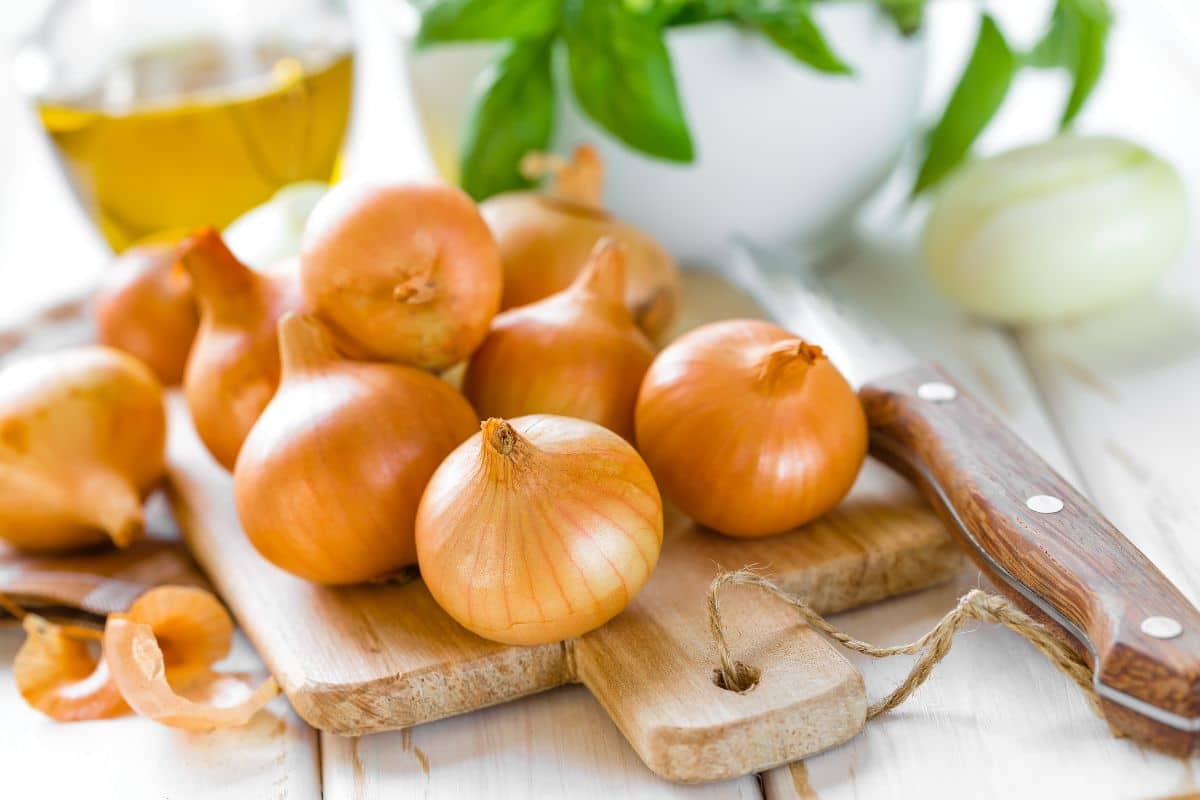
One of the most popular questions that get asked about some ingredients is whether they are classified as a fruit or vegetable. This is particularly true of onions.
Although onions are mostly used in savory dishes, in the same way as you would use vegetables, they can still be mistaken for fruits, like tomatoes are.
In this guide, we are going to look at whether onions are classified as a fruit or a vegetable and what decides the classification.
Is An Onion A Fruit Or A Vegetable?
From a cultural and culinary perspective, onions are widely considered to be vegetables. This is because of their savory flavor and use in savory dishes.
However, tomatoes are also used in this way and, scientifically, they are fruits. Naturally, the question arises of whether the same classification applies to onions.
The scientific classification of whether an onion is a fruit or vegetable depends on the physical structure of the onion. Onions are bulbs that grow underground.
However, they also sprout roots and form leaves above the ground. One of the most important characteristics of the onion is the fact that the edible structure is the plant itself.
It is because of this physical structure, scientifically, onions are classified as vegetables. From cultural, culinary, and scientific points of view, an onion is never a fruit and should not be used as one.
What Is The Difference Between A Fruit And A Vegetable?
Now that we know that onions are classified as vegetables, you might be wondering what the actual differences are between fruits and vegetables. Thankfully, there are a few characteristics that make plants either fruits or vegetables.
These characteristics are either cultural, culinary, or scientific. Below, we will look at the differences between fruits and vegetables.
Fruits
From a scientific point of view, if the edible part of the plant is grown from the flower of the plant, it is a fruit. This means that the plant has to produce both flowers and edible parts in a cycle to be classified as a fruit.
Another common characteristic that determines whether a food item is a fruit or vegetable is the location of the seeds. If the seeds are on the inside of the edible part of the plant, it is a fruit.
Despite the clear classification of what a fruit is, there are some foods that are scientifically classed as fruits that are used as vegetables. They are also often referred to as vegetables colloquially.
Some fruits that are commonly referred to as vegetables include cucumbers, squash, and tomatoes. All of these food items grow from the flower of their plant. They also contain the seeds of the plant.
Vegetables
In contrast to foods that are classified as fruits, vegetables do not sprout from the flower of the plant. Instead, the edible part of a vegetable is grown above or below the ground. The edible part must be a root, bulb, leaf, or stem.
Another, more general characteristic of vegetables that sets them apart from fruits is that once the edible part of the plant has been harvested for consumption, the plant cannot produce more edible parts.
An example of a vegetable characteristic is a carrot. The root of the plant is the edible part. Once you harvest the root and remove it from the ground, the plant cannot produce any more edible parts.
This is because the entire plant has been removed from the ground. You will need to plant more carrot seeds in order to reap more vegetables.
Why Is An Onion Classified As A Vegetable?
Now that the differences between fruits and vegetables have been clarified, it is easier to understand why onions are classified as vegetables.
Remember, there are three main categories that can potentially classify onions as vegetables but they don’t always match up with each other.
In the culinary world, onions are considered to be vegetables because they are exclusively used in savory dishes. This is the case even if they have been cooked in a way that brings out their natural sweetness.
With that being said, tomatoes are also used exclusively in savory dishes, despite the fact that they are classified as fruits.
The classification of onions as a vegetable is also applicable to the cultural point of view. This is because the cultural classification is closely related to the culinary use of a food item.
Because we used onions in savory dishes, we culturally assume that they must be a vegetable.
The most solid description of why onions are classified as vegetables come from the scientific category. As we mentioned above, one of the main scientific characteristics of vegetables is that the edible part of the plant is a bulb, root, leaf, or stem.
The edible part of an onion is the bulb of the plant.
Another scientific characteristic of vegetables is that once the edible part of the plant has been removed or harvested, the plant cannot make more of the edible part.
This is particularly true for onions. Because the plant grows from the bulb and the bulb is the edible part of the plant, the whole thing has to be removed from the ground to be harvested.
If you need further proof that onions are vegetables rather than fruits, onions do not have the characteristics that are required for classification as a fruit.
The onion does not contain seeds for the plant to grow because the plant grows from a bulb instead. The onion also doesn’t grow from the flower of the plant. Instead, it is the bulb itself that grows into the onion.
Why Do People Mistake Onions As Fruits?
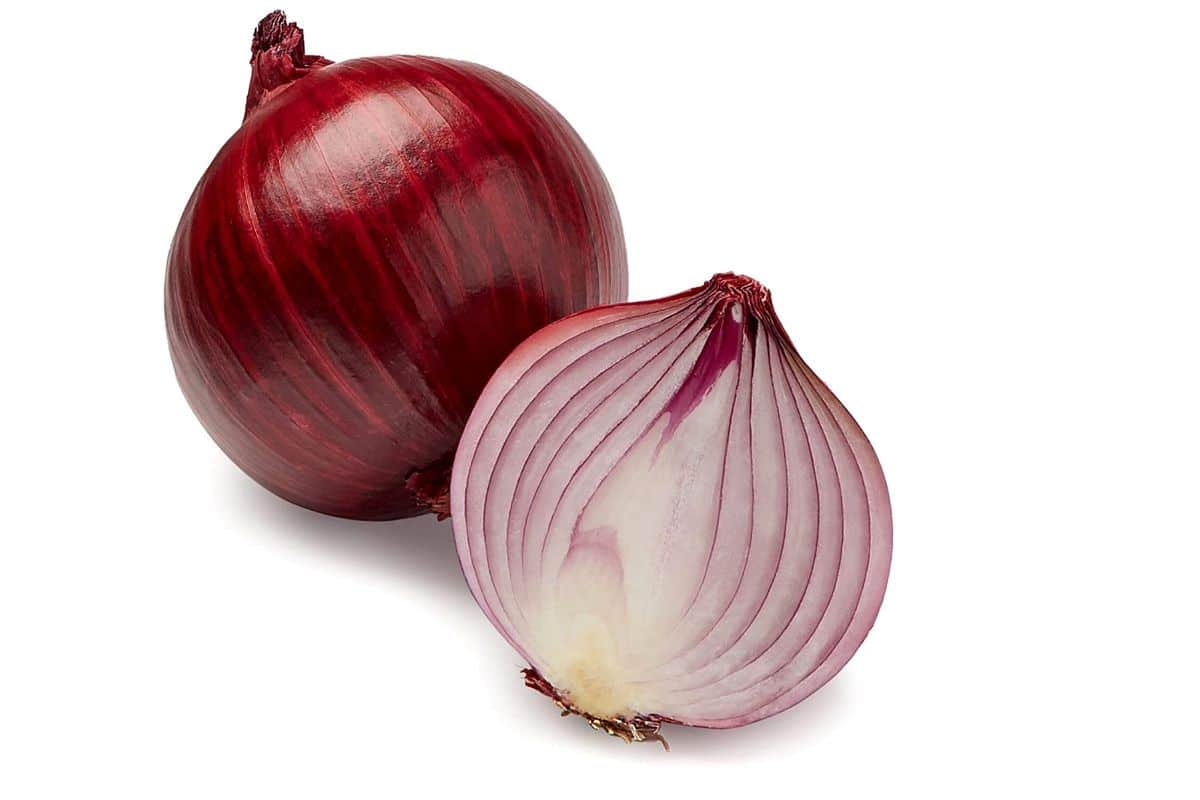
For some people, it is very obvious that onions aren’t a type of fruit because of the culture they have been brought up in or their exposure to the culinary world.
However, for others, it isn’t quite so clear, especially when you think about the way that tomatoes and cucumbers are often mistaken for vegetables when they are actually fruits.
Although we have proven that, scientifically, onions cannot be classified as a fruit, there are still some characteristics of the plant that can cause confusion for people and lead them to believe that onions may actually be fruits.
One of the most common reasons why people may mistakenly believe that onions are fruits is because the plant will flower every two years.
Because fruit is often linked to the flower of the plant, it can be common for people to assume that all plants that produce both flowers and food are fruit plants. However, there are specific characteristics that determine fruits from vegetables.
Although onion plants do flower biennially, the edible part of the plant isn’t produced from the flower. In fact, the edible part of the onion plant has been well established long before the plant will flower for the first time.
It is also important to note that the flower on the onion plant is where the seeds are produced. In order for onions to be a fruit, they would need to contain the seeds of the plant in the edible part of the plant.
What Makes A Vegetable A Vegetable?
By this point, you should be pretty clear on what a fruit is and why an onion is not classified as one. However, in order to better understand the differences between fruits and vegetables, it can be helpful to know what makes a vegetable a vegetable.
The main thing that makes a vegetable a vegetable is the lack of a seedy outgrowth from the plant. Vegetables are the edible part of a plant that doesn’t have a precursor flower.
This means that the edible part of the plant doesn’t replace the flower of the plant.
Vegetables can be made from the roots of a plant, such as parsnips. They can also be the stem of a plant, like celery. Leaves can be edible on some plants, such as lettuce or spinach. The bulb of a plant can be edible, such as with onions.
Tubers, like potatoes, can be the edible part of a plant. Even the flowers themselves can be edible and classified as a vegetable, like broccoli.
All of these things can help us to determine whether something is a vegetable or not. The characteristics of vegetables are much less restrictive than the characteristics of fruits.
Where Do Onion Seeds Come From?
We mentioned above that one of the reasons why onions cannot be classified as fruits is because they do not contain the seeds of the plant in the edible part. This raises the question of where the seeds do come from on the onion plant.
You will only get seeds from an onion plant that is well-established. This means that if you grow your own onions and harvest them before the plant has had a chance to properly establish itself, you will have to purchase more seeds to grow more onions.
An onion plant can only produce seeds from the top of the plant when flowering occurs. This is something that only happens when the plant is left to grow for more than a single season.
Onion plants are known to flower every two years if they are left to grow for multiple seasons. The seeds are produced in the flowers.
It is possible to grow onions from both seeds and bulbs, although this can be quite confusing for some people. The seeds are the most necessary part of the plant in order to grow more plants in the future.
It is these seeds that the rest of the plant stems from originally.
With that being said, if you go to your local gardening store, you are most likely to find onion bulbs rather than onion seeds. This is because you can grow and harvest onions much more quickly when growing from a bulb rather than growing from seeds.
Growing onions from bulbs can confuse some people because of the lack of seeds in the bulb. However, the bulb will have originally been grown from seed.
When you purchase onion bulbs to plant, the beginning of the growing process has already been done for you. Essentially, you are planting a very small, currently inedible onion into the ground.
From there, it will grow and flourish into a flavorful, juicy onion over time.
Are Onions Classified As Root Vegetables?
Another thing that can be confusing to understand about onions is whether they are classified as root vegetables. This is a common query as the edible part of the vegetable is grown underground.
However, simply being grown underground isn’t enough to classify a vegetable as being a root vegetable.
There is actually some debate about whether onions can be classified as root vegetables or not. Of course, the part of the vegetable that you eat is grown entirely underground and could arguably be the root of the plant.
However, it is different in size and shape from more common root vegetables such as carrots and parsnips. These root vegetables are easy to identify, in part because they have a similar shape to roots that we would recognize on other plants.
On the other hand, onions do not look like typical roots as they are rounded in shape. There is also some argument that the edible bulb of the onion plant actually produces its own roots.
The stringy bits you get at the base of an onion are the roots of the bulb. Onions also do not grow as deep as other root vegetables do.
With that being said, onions are commonly considered to be a root vegetable. In fact, they are widely considered to be one of the most healthy root vegetables you can eat.
This is because of the high volumes of vitamins, phytochemicals, and minerals that boost our immune systems, circulatory systems, and our overall health.
Other Commonly Mislabeled Vegetables And Fruits
Now that we have confirmed that onions are vegetables and not fruits, we are going to look at some other, commonly mislabeled fruits and vegetables.
The foods below are scientifically classified as either fruits or vegetables. However, they are often culturally or culinary mislabeled as being the opposite.
Tomatoes
One of the most commonly mislabeled foods is tomatoes. This fruit is mislabeled as a vegetable so much that pointing out its status as a fruit has become a common joke or gotcha moment in Western culture.
Despite being used culinary and culturally as a vegetable, tomatoes are actually fruits. This is because the seeds are contained within the edible part of the plant and because they form from the flower of the plant.
Cucumber
Another fruit that is commonly mislabeled as a vegetable is the humble cucumber. Again, this is a food that is culturally used as a vegetable in recipes. Despite its savory flavor and culinary use as a vegetable, it is scientifically a fruit.
This is because it contains its seeds within the edible part, although many people remove them before eating the fruit. Cucumbers also form from the flower of the plant.
Corn
A slightly more niche mislabeled food is corn. In fact, corn is commonly mislabeled because it can scientifically be classified as both a fruit and a vegetable. This is an interesting plant that is able to fit into both definitions of fruits and vegetables.
Because of this, technically, it is never mislabeled and always mislabeled at the same time. No matter what you call corn, you will be both right and wrong simultaneously.
Green Beans
Green beans are the go-to vegetable for many family meals. They are delicious, healthy, and easy to eat for all the family, no matter how old or young they may be. With that being said, green beans are actually fruits from a scientific point of view.
Because green beans contain their seeds within the edible part of the plant, they are actually classified as fruits rather than vegetables.
Despite this, you will always find them in the vegetable section of your grocery store because they are culturally accepted as vegetables.
Rhubarb
Rhubarb is a common fruit that is used in sweet stewed desserts, pies, and cobblers. The tangy flavor helps to create delicious sweet treats that aren’t too sickly. However, rhubarb is actually a vegetable from a scientific point of view.
This is because the edible part of the rhubarb is the stem. This is a common characteristic of vegetables. Despite this, from a cultural and culinary standpoint, rhubarb functions as a tangy and tart fruit.
Avocado
The most popular addition to brunches in the past few years, the humble avocado is culturally and culinary treated as a vegetable. Its buttery texture and mild taste make it the perfect accompaniment for toast and eggs.
However, avocado is actually a fruit. In fact, if you want to get even more specific, avocados are considered to be large berries with a single seed.
Are Onions Easy To Grow?
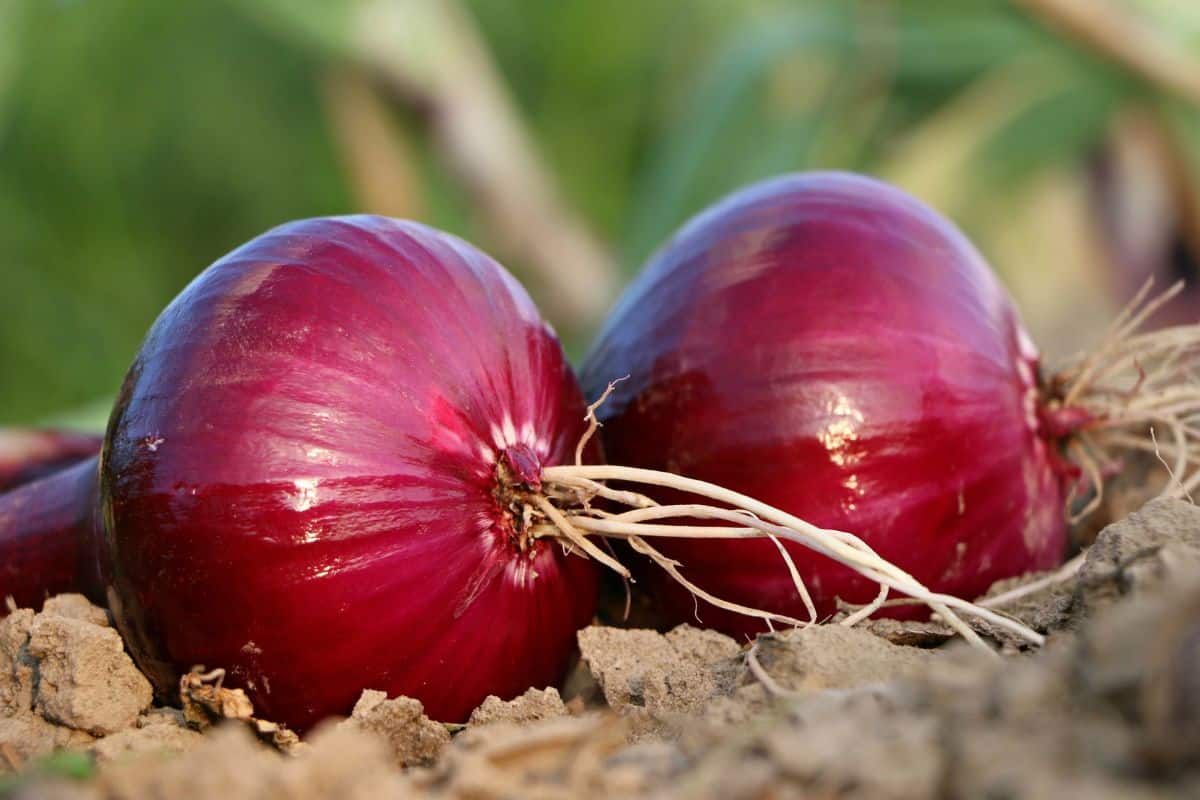
Now that you know that onions are definitely vegetables rather than fruits, you might be wondering whether it is worth growing your own onions.
After all, they are often the base ingredient of savory dishes. The main question that you will want to know is whether onions are easy to grow.
The short answer is, yes, onions are quite easy to grow. All they really need is the basic conditions that all plants need to grow. They require sunlight, fertile soil, and water.
The best thing about growing onions is that they don’t require a large amount of space to grow. This means that you will be able to grow them in a small yard, a flowerbed, or even in a window box if you don’t have a garden.
Another thing that makes onions a great vegetable to grow is that they are super versatile. These unassuming root vegetables are full of flavor and can be added to almost any savory dish that you make.
They can be consumed raw, fried, grilled, pickled, or sautéed. Even if you have a bumper crop for one year, you are not going to have to throw excess produce away.
What Are The Health Benefits Of Onions?
We briefly mentioned above that onions are one of the most healthy root vegetables that you can eat. However, you might be wondering what the specific health benefits of eating onions are.
In short, onions are packed with healthy nutrients, and antioxidants, and they have antibacterial properties. There are many aspects of your health and your body that onions can protect and improve.
There is scientific evidence that suggests that onions can boost the health of your heart. This can help to protect you against cardiovascular disease and other heart conditions.
It has also been suggested that regularly consuming onions as part of your diet can help to prevent or fight the development of cancerous cells in the body.
Obviously, onions shouldn’t be used in place of medical interventions if you have or suspect that you have cancer. However, adding them to your diet can boost your chances.
There is also evidence to suggest that onions can be useful in improving your digestive health and controlling your blood sugar levels.
This can be particularly useful for people who are overweight or have diabetes. Onions can also help to improve bone density thanks to the high levels of manganese, potassium, and folate.
Final Thoughts
Although onions can sometimes be mistaken for fruits, they are classified as vegetables scientifically, culturally, and culinary.
Onions are super easy to grow yourself and they make a great addition to your diet thanks to all the vitamins, minerals, and health benefits that they offer.
Frequently Asked Questions
One of the things that put people off from adding onions to their diet regularly is the fact that they make you cry when you cut them.
This happens because gas is formed when you cut into the onion and cause damage to the walls of the cells. This gas then reacts with the tears that lubricate your eyes to make sulfuric acid. This causes your eyes to sting and makes you cry.
Thankfully, there are some ways that you can minimize the risk of the gas making you cry when you chop onions. The easiest way to minimize the release of gas from the onion is to use a sharp knife.
The sharper the knife, the cleaner the cut will be. This will cause less damage to the onion and result in less gas.
You should also try to keep the cut side of the onion facing down so that it is flat against your chopping board. This will prevent the chemicals from escaping into the air.
You can also cool your onion before you cut it to alleviate the effects. Soaking the onion in cold water or placing it in the refrigerator or freezer before you cut it can reduce the risk of tears.


